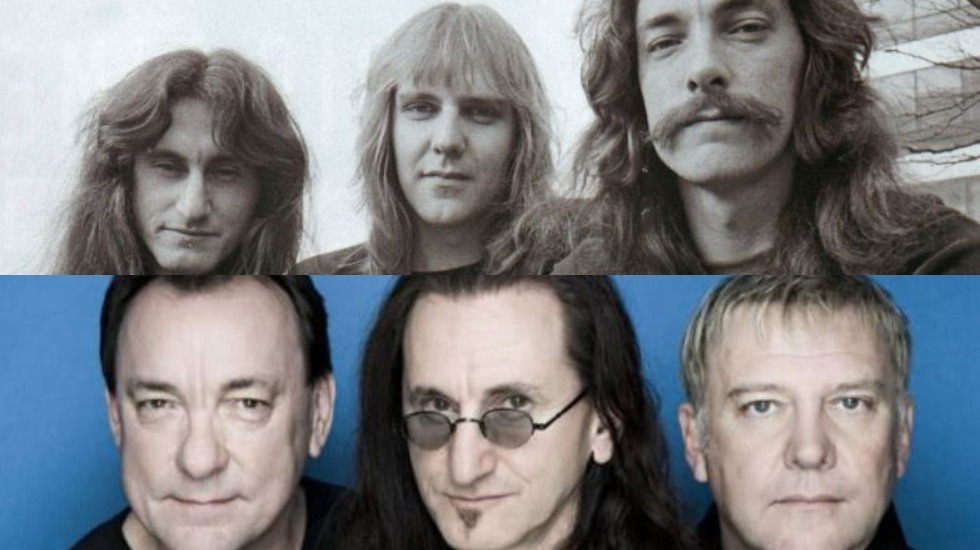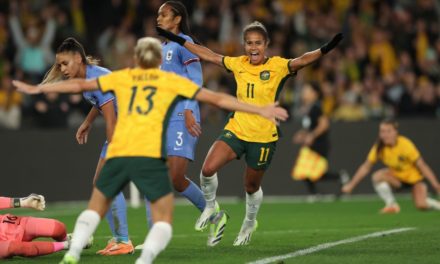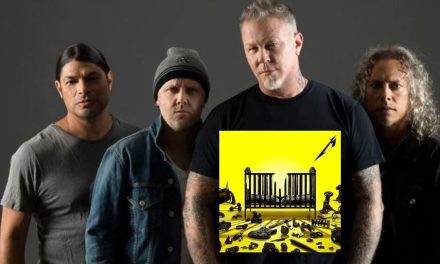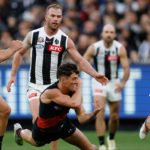Rush guitarist Alex Lifeson, drummer Neil Peart and bassist/singer Geddy Lee on stage in 2012. Photo: RANDY JOHNSON
Some of us are more obsessive than others. And as I stand in blistering heat, packed into a 40,000-strong crowd on the other side of the world, I begin to realise I’m at the extreme end of the spectrum.
It’s mid-July 2010, and I should be home in Melbourne covering another weekend of AFL football as the season gets to the pointy end. Instead, I’m 16,500 kilometres away, in Ottawa, Canada, about to watch a rock band most people in my own country have never heard.
I blame “Family Guy”, the anarchic US animated comedy series, and another personal obsession of sorts.
It was in one of those crazy cutaways on which the show thrives that I saw a stoned “Chester”, the Cheetos mascot, crush and snort through a straw his own product, before announcing defiantly over the pounding rhythm in the background: “Oh God, there is no f…… better drummer than Neil Peart!”
Music’s another obsession of mine. I knew I’d heard that name. Just couldn’t place it. Google did. Peart was the drummer for Rush. Now it got more interesting. Here was a band I’d seen mentioned in passing references for as long as I’d been listening to music, yet never actually heard.
Odd, given the Canadian power trio had been around just on 40 years. Odder, given their success. More than 40 million records sold worldwide. A body of work spanning 19 studio albums, eight live albums and 10 compilations, of which 24 were certified gold and 14 platinum. Indeed, Rush rank third behind only The Beatles and The Rolling Stones for most consecutive gold and platinum record sales in recording history.
That deserved at least a look. On YouTube, I found a video clip for what I subsequently discovered was Rush’s biggest hit, “Tom Sawyer”. Gobsmacked would be a fair description of my reaction.
Here were three pretty daggy-looking blokes creating a musical storm the likes of which I’d never heard. It was light years away from the hardcore stuff I’d tended towards most of my life. The clip was from 1981. They used keyboards, for Christ’s sake.
But as I frantically started scouring their catalogue, each new song leaving me as awestruck as the first, I recognised that whatever elements had conspired to lure me, whether the epic sonic journeys of their early work, the low rumble of Geddy Lee’s bass, Peart’s thoughtful lyrics, Alex Lifeson’s atmospheric guitar, or the sheer jaw-droppingly brilliant musicianship of all three, I had a new obsession.
I’m hardly alone, mind you. As I soon discovered, Rush fans have a fearsome reputation as the “Trekkies” of music, fiercely loyal to their heroes, and fiercely geeky. But on that score, the timing of my little musical re-birth couldn’t have been better. Geek, of course, is cool these days. And after being critically scorned for so long, Rush suddenly became (in the northern hemisphere) very, very cool.

Virtuosity. Alex Lifeson and Geddy Lee do their stuff on double-necked guitar and bass in 1977.
They started to bob up everywhere. On US comic Stephen Colbert’s “Colbert Report”, the band’s first appearance on US television for 33 years. In continued references in animated comedies such as “South Park” and “Family Guy”, even the normally super-cynical likes of creators Matt Stone and Trey Parker, or Seth McFarlane, equally star-struck musical nerds once more.
Or, for that matter, mainstream cinema. The 2009 film starring Paul Rudd and Jason Segel, “I Love You, Man”, had as its central theme the bonding of those two leads over their mutual love of Rush. Or the acclaimed BBC documentary series “Classic Albums”, which documented the making of two Rush standards, “2112” and “Moving Pictures”.
Or in appealing to a whole new generation of fans via the inclusion of several Rush tracks on popular games like “Rock Band”, and their own dedicated “Guitar Hero” game, “Warriors of Rock”, the story-based quest mode paying homage to the cult classic Rush album “2112”.
And there was another round of worship when on this day (January 7) a year ago, Peart, five years after the rock veterans had played their last gig, sadly passed away at the age of 67 after a three-year battle with brain cancer.
It was some ride. And for those whose interest may have been piqued, most memorably captured in the outstanding 2010 documentary “Rush: Beyond The Lighted Stage” (available on Netflix).
Made by Scott McFadyen and Sam Dunn, the pair who also produced the acclaimed “Metal: A Headbanger’s Journey” and “Iron Maiden: Flight 666”, the documentary spans the four decades-plus of the band’s history, and speaks to most of those who worked with them, along with, perhaps amazingly for three guys approaching 60, their parents.
Lee, Lifeson and Peart are interviewed at length, there’s a stack of amazing archival footage, most memorably a 17-year-old pimply-faced and suitably defiant Lifeson arguing across the kitchen table with his parents about the wisdom of dropping out his final year at high school.
It’s incredible fly-on-the-wall stuff, which was originally shot with the teenaged Lifeson one of the subjects of a “Seven Up” type documentary which never got off the ground. The 56-year-old looks back at himself having it out with his folks with a wry smile. “They were right,” he says.
Lifeson, Lee and the more serious Peart, who wrote Rush’s lyrics, which have traversed a very wide array of subject matter over the years in an almost-literary and thoughtful manner, are engaging interview subjects, intelligent and articulate, and never having lost the ability to laugh at themselves, even when the critics were laughing at them.
The documentary catalogues the long list of insults hurled at Lee’s high-pitched and unique voice. “A hamster in overdrive”. “The dead howling in Hades”. “Mickey Mouse on helium”. “Strangling a hamster”. “A cat being chased out the door with a blowtorch up its arse”.

Rush fans were famously devoted to the band, as were this crowd from a gig in 1977.
There’s much laughter at their own appalling fashion sense over the years – cue shots of the band circa 1977, and we’re not just talking long hair or Peart’s porn-star moustache, but some serious kimono action. Lee recalls a tour with English band UFO, and the support act leaving furry slippers nailed to the stage next to Lee’s mic.
But that lack of sartorial smarts says it all, really. Because for Lee, Lifeson and Peart, it was never about image, and certainly not the rock ‘n roll lifestyle.
Rush toured extensively with Kiss in the mid-‘70s. Kiss front man Gene Simmons recalls with continued bemusement the failure of his touring partners to avail themselves to the various temptations thrown in their direction. They were in their rooms watching TV.
Or perhaps writing. Or practising. For Rush, it was always just about the music. A constantly-unfolding palette of styles and sounds. Too hard to categorise. Certainly, altogether too difficult for the conservative Australian commercial radio market to deal with. So what did we miss?
“The one constant throughout the decades is that it’s been difficult to fit them into any kind of definition,” says one-time Canadian version of “Molly” Meldrum and now US based CNN news anchor, JD Roberts. “Their music was hard rock, but at the same time it was orchestral. The melodies were simple, but at the same time complex. Nobody could every really put their finger on exactly what they were.”
Kiss front man Simmons backs him up. “What makes Rush unique is fearlessness. It’s the quality of striving to write a song and not caring about what’s popular, what’s not. There’s only one band that sounds like them. What kind of band is Rush? It’s Rush.”
The band’s self-titled 1974 debut was very Led Zeppelin-esque, but the arrival of Peart as the band’s second drummer and new lyricist in 1975 for the follow-up, “Fly By Night”, took Rush in a more prog-rock direction.
Heavy of sound. And subject matter. Science fiction. Politics. Philosophy. Pursued on side-long epics on albums like “2112”, “Farewell To Kings” and “Hemispheres” which followed. The music was, as always, masterful, but music criticism’s eternal search for “cool” and the punk explosion of the late ‘70s suddenly rendered the likes of Rush easy targets for claims of pretentiousness.
The critics never really bothered taking another look, even as a string of huge-selling and more accessible albums in the early 1980s ended up taking the band all the way to the top of the North American charts. And there’s no small amount of irony in the fact some of the contemporary musicians over whom the music press have since swooned were inspired by and still speak in awe about the power trio.

Rush 35 years apart. At top, Lee, Lifeson and Peart in 1977, below Peart, Lee and Lifeson in 2012.
The list of worshippers includes, among others, Kirk Hammett (Metallica), Taylor Hawkins (Foo Fighters), Billy Corgan (Smashing Pumpkins), Tim Commerford (Rage Against The Machine), Les Claypool (Primus), Trent Reznor (Nine Inch Nails), Mike Portnoy (Dream Theater), Danny Carey (Tool) and Sebastian Bach (Skid Row).
“I bought every magazine, I had every record, I cut out every picture,” recalls Commerford of his teenage Rush worship. “I would go to sleep at night with Rush on the headphones, and I’d wake up, and it was still playing.”
Says Metallica guitarist Hammett: “It took me on a journey, instantly, and I looked at the album cover and saw there was only three of them, and remember thinking: ‘How could three guys make such a sound’?”
Some were as much into the story as the music, like Skid Row vocalist Bach. “I read the back (of 2112) and it was dedicated to “The Fountainhead”, the book, so I went out and bought it and read it! Not too many bands make a 12-year-old go out and buy “The Fountainhead by Ayn Rand!” He mimics his childish self: “God damn, this rock band’s got me all fired up about literature!”
“The thing with us,” says Lifeson, “is we’ve always walked along the shore of the mainstream. And we’ve been attached to it and connected ourselves to it time and again, but we’ve always been a little bit outside of it.” Lee chuckles: “I always like to consider us the world’s most popular cult band.”
And those once star-struck kids turned fervent cultists became determined Rush would finally get the critical acclaim to go with that of the public and the musos. Smashing Pumpkins’ front man Corgan is particularly passionate.
“I believe when people step back and actually really look at who the great bands were, they are one of those bands,” he says in the film. “But somehow, they were never popular enough that they’d get commonly name-checked band as one of the great bands of all time.
“A lot of the other stuff has been over explained. Led Zeppelin, The Beatles have been over-explained. It doesn’t tell the whole story. And you can ask: ‘Why was this band marginalised? What was it? It doesn’t matter. They’re there. And somebody has to explain why they’re there.”
“Beyond The Lighted Stage” does a pretty good job of it, but also touches on the personal bond between this trio of amazing artists, even managing to have Peart bare his soul about the loss of his teenage daughter in a car accident and the death of his wife from cancer within months of each other in 1997.
Those tragedies saw Rush out of action, and pretty much presumed finished, for the next few years. But after a motorcycle trek across North and Central America spanning 88,000 kilometres, Peart found the will to play again.
Soon after, they’d released another album, “Vapor Trails”, and, on a last-minute whim, decided to take their act to Brazil, where crowds of 60,000 and 40,000 turned out to see them play in Sao Paulo and Rio de Janeiro, the phenomenally-successful concert DVD “Rush In Rio” testament to the regard in which they’re held in at least one part of the southern hemisphere.

The author and long-suffering partner Abby soak up a three-hour Rush gig in Ottawa, Canada in 2010.
On this hot Sunday evening in Ottawa, it feels like I’m surrounded by at least as many as that Rio gig. There’s an obvious local swelling of chests about these enduring masters of their craft. But more sheer excitement at the prospect of a three-hour show which will include a complete track-by-track performance of the seminal “Moving Pictures” album.
The perfection and power of Rush live is, in this lip-synced, auto-tuned age, more than half their reputation, enough to have made the “what ifs” had I not followed this siren call to its logical conclusion at a show half-a-world away just too overwhelming.
So here I am. About 10 metres from the stage, Peart’s massive drum kit glistening invitingly on a beautiful set replete with carefully-crafted props reflecting this tour’s “Time Machine” theme, the band’s then still-to-be-released final studio album called “Clockwork Angels”.
After a short video “mockumentary” entitled “Rash: The Real History of Rush”, they burst into one of their biggest hits, the scatty, poppy, brilliantly-crafted “Spirit of Radio”.
The sound is everything I’d dreamed: BIG, bassy, and importantly, loud. Lee, Lifeson and Peart peel off riff after note-perfect riff with an effortless but still energetic groove. I know within seconds that I am going to absolutely go off my cruet. And I do.
The two-part set spans all eras, and lasts close to three hours. It’s masterful: tight, powerful, the sound of three brilliant individual musicians soloing together during the instrumental break of “Freewill”, not only keeping but enhancing the groove, is something from another world.
The “Moving Pictures” section is the highlight, the classic album played out track-by-track, some of them among the most frequently played on radio in the northern hemisphere for decades now – “Tom Sawyer”, “Red Barchetta”, the instrumental “YYZ”, “Limelight”.
There’s “Far Cry” off the last album and “Caravan” off the forthcoming one, riff-heavy the pair of them, evidence of a band actually packing an even bigger and harder punch as it gets older.
Rush play “The Camera Eye”, another rolling 11-minute sonic journey, for pretty much the first time live. There’s another mega-instrumental, “La Villa Strangiato”, and “Working Man”, from that first album back in 1974, and the song which first had them noticed across the American border.
I savour every last Peart drum roll and high-five my new Rush-loving mates next to me in the crowd. They actually refuse to believe I’m not taking the piss when I tell them Rush remain little-known in Australia.
Perhaps that could change if the popular culture references keep coming as frequently as they have been, I promise those beside me in Ottawa, vowing to do my bit.
And as I get older, another decade down the track, I’m not seeming to care whether my love of Rush remains the source of amusement among the more image-conscious musically-inclined friends of mine. All I can hear as I type is Lifeson’s solo in “La Villa Strangiato”. And it truly is beautiful.
Thank you, “Family Guy”. And yes, Chester, you’re right. There WAS no f…… better drummer than Neil Peart.












Hey Rohan,
Hope you’ve got the Geddy book by now and that you’re on the mend. Loved this piece. I’m glad you mentioned the website as a means to read it – I’ve been here before but wouldn’t have expected to find writing on Rush. So, you leading me here is a nice confluence of interests in music, books and footy. Cheers! (And to Neil)
– Lee from the bookstore.
Hi Lee,
Only just saw this, many apologies! Yes, I’m on the mend and I’m nearly finished the book, it’s a ripper, and has kickstarted a whole new Rush listening binge for me. Anyway, make sure you read it, he’s a great, intelligent and funny guy.
Cheers,
Rohan
I’ve lived in Australia permanently for the last 25 years, and yes, Rush definitely is little known here. But I was listening to the radio in Brisbane one afternoon and the DJ was dedicating the day to drummers and who people thought was the best. Lo and behold, an Aussie rang up and said Neil ! I almost had to pull over because I was in shock! I got talking to the DJ and he agreed that it’s sad that Rush never made it down here.
As a side note though, when I lived in Perth in 1996/97, I was looking for a shared-accommodation place to stay and I looked at this one place that had a bunch of people my age staying there. One guy was from Indonesia who was over here to study english. When I said I was from Canada, he asked (in broken english) if I had ever heard of a band called Rush…Oh hell ya! He was telling me that Rush was actually quite popular in Indonesia where he was from. We ended up spending the next hour or so listening to various Rush albums that he had brought over with him. Nothing like hearing “Subdivisions” and “The Big Money” blasting ! 🙂
Thankyou so much for writing this piece. As a fellow Aussie Rush fan, I can relate so very much. My first exposure to the band was seeing an animated short (the Body Electric) on ABC after school television in the 1980s, the soundtrack of which was made up of pre Hold Your Fire RUSH songs. In the days before the internet, information was difficult to find. One thing is for sure though: When I found another RUSH fan, I found a new friend.
I’m a bit like you in having come to Rush very late. Unlike you I didn’t have the good luck to see them live before the sad death of Neil Peart. But I’m now a fan and from reading this there’s no doubt about your passion for them Rohan. Really great article, and I’m so glad I found it trolling round the net.
Hi Campbell, thanks a lot for that, much appreciated. I think one of the best things about “discovering” them late is that there’s so much stuff to get through. Reckon it took me a couple of years to even hear it all once, and had great fun doing so!
I probably wouldn’t know a Rush song if it hit me in the head but I know when I see a piece of passionate music journalism. Good stuff.
Thanks for that, Vin.
Straydog . Metal before metal . Snuffy Waldrin ( West Wing theme music ) . Had power , dirty bass and an almost King Crimson mayhem . 1973